Hauptsitz
Niederlassungen
Business Development
Robe Enjoys the Blue Hour at PQ19
Beteiligte Produkte
Robe embraced the vitality and essence of visual and aural collaboration in supporting “Blue Hour”, a large scale multifaceted immersive installation staged in the Small Sports Hall venue at the Prague Exhibition Grounds for the 2019 Prague Quadrennial of Performance Design and Space (PQ2019).
This complex work was developed from an idea originally conceptualised by the PQ19 event curators Marketa Fantova and Jan Rolnik. Their vision was an ambitious project to unite a series of innovative and prominent performance designers working in six separate but related disciplines – lighting, video / projection, experimental sound, tactile elements, VR and systems integration – under the direction and guidance of French visual artist, Romain Tardy.
Leading the Lighting Workgroup were Pavla Beranova and Fereshteh Rostampour who worked with and mentored a group of 15 students from the US, Chile, Brazil, the Czech Republic, Taiwan and Belgium, who had responded to an open call to assist in the creative and technical processes involved in lighting the work.
Robe made available 40 of its T1 Profile moving lights, 20 of the new T1 Washes plus 40 x MegaPointe multipurpose fixtures and 20 x CycBar15 LED battens which were utilised as the main lighting fixtures of the piece, rigged to a variety of temporary trussing and scaffolding structures erected all around the Small Sports Hall interior. Four Spikies were used for assisting the VR part of the Blue Hour experience.
Robe’s role in realising the project was co-ordinated by JJ Valchar, sales manager for the Czech Republic and Slovakia.
The result was a provocative and stimulating ‘experiential’ work in four sections comprising layers of visual and sonic inputs including a full soundscape based on the rhythms of a circadian clock – a biochemical oscillator that cycles over about 24 hours in most living organisms which is synchronised with solar time.
The title “Blue Hour” was a juxtaposition of that special and unique moment of morning and evening twilight when the sun is just below the horizon, and the sky is coloured an intense, penetrating and beautifully ephemeral blue.
The Blue Hour cycle ran for 24 minutes. Participants imbibed the six expressive creative disciplines and the four segments of time each coming away with a completely individual interpretation.
None of the Blue Hour artists or collaborators had previously worked together, and the overall work demonstrated how all these different media and visual experiences and a cacophony of ideas can work together to create an environment that evoked a series of different and direct emotional responses from the viewer.
It was the PQ19’s main creative centrepiece and was enjoyed by a diverse audience.
For Pavla, a freelance lighting designer working prolifically in theatre, dance, opera and architecture in the Czech Republic and across Europe and a teacher at the Academy of Performing Arts in Brno, Czech Republic, Blue Hour was 9 months in the making.
In March she was joined by Fereshteh, a professor of lighting and set design at Auburn University, Alabama, USA, whose professionalism and experience was invaluable in shaping the artistic direction of the students.
Pavla was originally approached by the curators of the installation, and then put the team together to realise the Lighting part of the work via an open call-to-artists. From there, the content of the lighting design evolved based on four 6-minute sections.
Robe had already offered creative and technical support to the PQ19 event. The company has been involved in past PQs and see it as a significant international melting pot for the development and use of creative and technical disciplines in new and engaging ways.
Pavla and Romain Tardy both had initial ideas about where Blue Hour’s lighting should be positioned around the Small Sports Hall for maximum impact. They needed to get elements of light – a shaft, a swirl, a slice of luminance, a patch of texture, a series of searing and forceful beams – into all areas of the large and relatively low-ceilinged space.
It soon became clear after the first discussions with Pavla, that Robe’s refined T1 LED range with its subtle and smooth colour mixing and highly accurate shuttering system would be ideal for the abstract collage effects she was envisioning, as would the power, punch and flexibility of the MegaPointe.
Pavla loved the quality of the T1 luminaire generally and commented that “the warm white range was excellent!”
Even though the Hall offered up a voluminous space, Pavla had wanted smaller fixtures, so their physical presence was subtle enough for them to be close to the audience, and they still had sufficient light output to achieve what she wanted, adding to the anticipation of where the light source might be coming from.
“I am impressed with how Robe has been considering the size and physical low impact of its lights for some time” she commented.
In the MegaPointes, she highlighted the advantages of “having everything you need in one fixture – wash, beam and spot – plus all the great features,” adding that they were also bright but subtle enough to blend nicely with the projected light aspects of the installation.
Being Czech, Pavla was aware of Robe and its products, however she had not yet used the new T1s on a project.
Fereshteh, on the other hand, had not previously worked with Robe moving lights and was “extremely impressed” with the overall scope and creativity and just how much can be achieved with a single light source! The MegaPointe is now a firm favourite of hers, “especially for this type of environment and our creative end-goals ... it was brilliant for the job.”
The Blue Hour was a great example of just how adaptable both T1s and MegaPointes can be for lighting in any environment from standard rock concerts and TV shows to experimental art installations like this.
On a large scale the Blue Hour Lighting Workgroup worked in very close collaboration with the Sound Workgroup, led by Rob Kaplowitz and the Video Group led by Romain Tardy, while on a smaller scale, the light designers co-operated with Tereza Stehlíková and her Tactile Environments group.
The Lighting Group’s advance work involved an lot of previsualisation – from hand-drawn sketches to Capture – all collated by Pavla and which paid off when they arrived on site well prepared and able to maximise the extremely short time they had to build the installation and in some cases physically meet the other departmental collaborators for the first time!
The previsualisation in Capture also proved to be an essential tool in collaboration with the Video and Sound groups during the first days of the creative process on site.
The Blue Hour lighting cues were triggered via timecode linked to the soundscape, a process undertaken by the project’s Systems Integration Workgroup.
A core component of the Blue Hour project in a PQ context is the learning curve based on the intensive teamwork and potential synergy resulting from the uniting of experienced artists with emerging and aspiring designers, all selected through the democracy of an open call for creative collaboration.
Lighting Group participants selected from the open call were Kelly Rudolph and MeJah Balams both from the USA; Paula Castillo Tocornal from Chile and the USA; Ana Luisa Quintas from Brazil; Tereza Bartůňková from the Czech Republic and Zuzana Bottová from Slovakia.
They were joined by nine interns - Jack Stoffel from the USA and Yen-Min Tseng from Taiwan, together with Dorian Stevens, Sarah Feyen, Lara Van Bellingen, Sinan Poffin, Guust Sambaer, Casper Van Overschee and Thomas Maes all studying at the RITCS school of Arts in Brussels.
Jack Stoffel is one of Fereshteh’s BFA Lighting Design students who will be graduating in 2020. Through a competition, he was granted an internship by PQ which would count as a college credit at the Auburn University Theatre Program. Sean Crowley, director of the internship program, knew Fereshteh would be co-leading the lighting workshop for 36Q – the artistic and technical side of performance design – and assigned him to Blue Hour as part of his internship. Being involved with a huge lighting project as part of his studies worked brilliantly for everyone.
From Robe’s perspective, JJ commented: “It was a great pleasure working with Pavla and her team as well as seeing two well-known industry women and LDs designing this special lighting installation and managing all the students.
“The environment was more industrial than a typical theatre space, so the LDs / artists really had to up their game, let their imagination loose and think about every detail and numerous angles to meet their goals and create a unique experience. The T1s looked brilliant framing the richly-coloured beams so precisely and dramatically. It was a demanding showcase for all the fixtures’ theatre-focused features but - and I believe - it was a really good decision to make them available for this important work.”
Photo Credit: Louise Stickland
Vorheriges
Nächstes
Entdecken Sie weitere Neuigkeiten
Robe Lighting enjoyed another year as production lighting supplier of the TPi Awards 2024, staged at Evolution in Battersea, London, UK, supplying over 200 lighting fixtures to the event that were used to realise a stunning lighting scheme for TPi Magazine, part of Mondiale Media.
Bogotá’s Movistar Arena staged the 2023 Red Bull Batalla World Final, celebrating the creativity, importance, and popularity of freestyle rap culture in Spanish-speaking communities. The event was fully loaded with energy and excitement and lit by Madrid, Spain-based lighting designer Edu Valverde from design studio Experiencias Visuales.
Renowned trance music festival Transmission transposed to the Gelredome in Arnhem in The Netherlands for the first time, presenting its newest “Elysium” show concept at the end of 2023 and keeping the winning international production and supply teams that have helped make the event such a success in its native Czech Republic and globally.
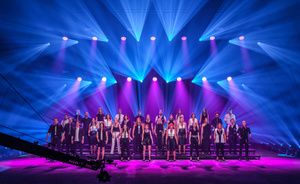
Crt Birsa from Slovenian design studio Blackout recently utilised Robe moving lights to realise the raw and edgy lighting aesthetic wanted by Slovenian vocal orchestra Perpetuum Jazzile for a video shoot in Ljubljana.
Navigation
Support
Folgen Sie uns
Bleiben Sie in Kontakt
Navigation
Folgen Sie uns
Bleiben Sie in Kontakt
All rights reserved. Created by Appio
Robe Lighting verwendet Cookies. Wir verwenden Cookies, um Inhalte und Anzeigen zu personalisieren und um unseren Datenverkehr zu analysieren. Bitte lesen Sie unter "Mehr über Cookies", wie sie auf unserer Website verwendet werden. Klicken Sie auf "Ich stimme zu", um sie zu aktivieren, oder auf "Schließen und nur nicht zustimmungspflichtige Cookies verwenden", wenn Sie sie nicht wünschen. Sie können Ihre Einstellungen jederzeit unter "Cookies" in der Fußzeile ändern.
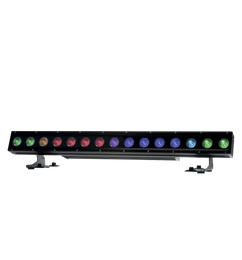 CycBar 15™
CycBar 15™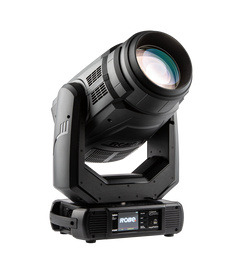 MegaPointe®
MegaPointe®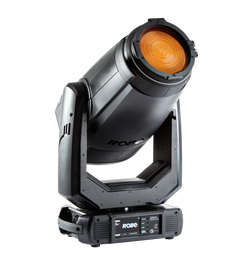 T1 Fresnel™
T1 Fresnel™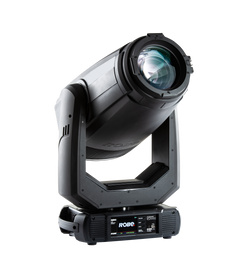 T1 Profile™
T1 Profile™



